Deeper Knowledge, Curated Books and Products
Curated insights on Japanese history, culture, martial arts, spirituality, medicine, and more, offering deeper understanding along with useful books and products
知識と製品
Recommended Reading for Deeper Martial Insight
/ Origins / Spirituality / Bujinkan / Amatsu / Books / Gear & Products /
These books were chosen to cover the Bujinkan’s foundations—'Ten' Spirituality, 'Chi' Conflict, and 'Jin' Healing—a basic intro to deeper martial arts understanding.
Books →
This section introduces the key principles of Spirituality, Metaphysics, and Philosophy, providing a foundation for understanding the deeper aspects of the Bujinkan beyond physical training.
This section covers Conflict, exploring Chinese and Japanese war classics and Ninjutsu (including strategy, tactics, and the understanding of human nature).
This section covers Healing, including Anatomy & Traditional Chinese Medicine, Taoist Energy Healing, Nutrition, and Herbalism.
Recommended Reading for Deeper Martial Insight
These books were chosen to cover the Bujinkan’s foundations—'Ten' Spirituality, 'Chi' Conflict, and 'Jin' Healing—a basic intro to deeper martial arts understanding.
Books →
This section introduces the key principles of Spirituality, Metaphysics, and Philosophy, providing a foundation for understanding the deeper aspects of the Bujinkan beyond physical training.
This section covers Conflict, exploring Chinese and Japanese war classics and Ninjutsu (including strategy, tactics, and the understanding of human nature).
This section covers Healing, including Anatomy & Traditional Chinese Medicine, Taoist Energy Healing, Nutrition, and Herbalism.
Shopping through our links allows us to earn a small share at no extra cost to you.
As an Amazon Associate, we earn from qualifying purchases,
and everybody wins!
Support Us As You Shop


Shopping through our links allows us to earn a small share at no extra cost to you. As an Amazon Associate, we earn from qualifying purchases, and everybody wins!
Support Us As You Shop
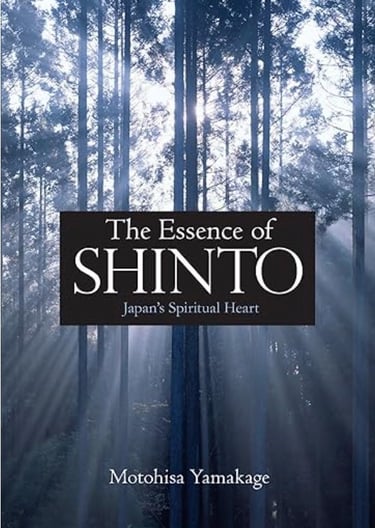

We have selected this book as a valuable reference for understanding Shintoism, a tradition often said to be fully grasped only by the Japanese. Written by Motohisa Yamakage, the 79th-generation head of the Yamakage Shinto lineage, it offers a rare and accessible introduction to Shinto’s core values, history, and spiritual depth. It explains both fundamental principles and more esoteric teachings, showing how Shinto is woven into Japan’s spiritual roots and cultural identity. For Bujinkan students, it provides essential context for the cultural and spiritual background of our martial tradition.
by Motoshisa Ymakage (Author)

4.8
Ten | Spirituality
Ten | Spirituality / Shintō
The Essence of Shinto: Japan's Spiritual Heart


We have selected this book as a valuable reference for understanding Shintoism, a tradition often said to be fully grasped only by the Japanese. Written by Motohisa Yamakage, the 79th-generation head of the Yamakage Shinto lineage, it offers a rare and accessible introduction to Shinto’s core values, history, and spiritual depth. It explains both fundamental principles and more esoteric teachings, showing how Shinto is woven into Japan’s spiritual roots and cultural identity. For Bujinkan students, it provides essential context for the cultural and spiritual background of our martial tradition.
by Motoshisa Ymakage (Author)
4.8
Ten | Spirituality
Ten | Spirituality / Shintō
The Essence of Shinto: Japan's Spiritual Heart


We have selected this book as a valuable reference for understanding Shintoism, a tradition often said to be fully grasped only by the Japanese. Written by Motohisa Yamakage, the 79th-generation head of the Yamakage Shinto lineage, it offers a rare and accessible introduction to Shinto’s core values, history, and spiritual depth. It explains both fundamental principles and more esoteric teachings, showing how Shinto is woven into Japan’s spiritual roots and cultural identity. For Bujinkan students, it provides essential context for the cultural and spiritual background of our martial tradition.
by Motohisa Yamakage (Author)

4.8
Ten | Spirituality
Ten | Spirituality / Shintō
The Essence of Shinto: Japan's Spiritual Heart
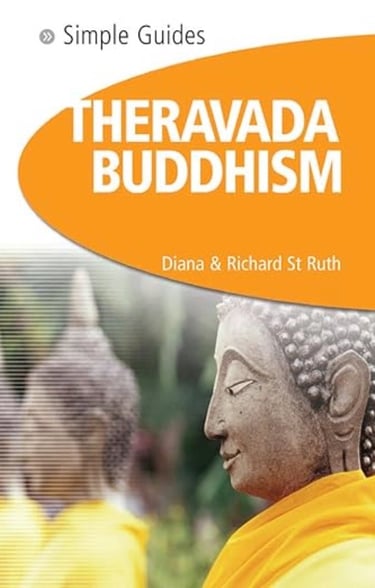

Theravada Buddhism - Simple Guide (Simple Guides)
We have selected this book for our Bujinkan students who wish to deepen their understanding of the philosophical and spiritual foundations of martial arts. It provides a clear introduction to Theravada Buddhism, one of the three main branches of Buddhism, explaining its key practices, traditions, and principles in an accessible way. By reading it, you can connect these timeless teachings to your own training, self-discipline, and personal growth, gaining insight into the ethical and mindful aspects of martial arts and enriching both your practice and your understanding of the world around you.
by Diana St.Ruth (Author), Richard St.Ruth (Author), Simple Guides (Author)

4.6
Ten | Spirituality / Buddhism


Theravada Buddhism - Simple Guide (Simple Guides)
We have selected this book for our Bujinkan students who wish to deepen their understanding of the philosophical and spiritual foundations of martial arts. It provides a clear introduction to Theravada Buddhism, one of the three main branches of Buddhism, explaining its key practices, traditions, and principles in an accessible way. By reading it, you can connect these timeless teachings to your own training, self-discipline, and personal growth, gaining insight into the ethical and mindful aspects of martial arts and enriching both your practice and your understanding of the world around you.
by Diana St.Ruth (Author), Richard St.Ruth (Author), Simple Guides (Author)
4.6
Ten | Spirituality / Buddhism
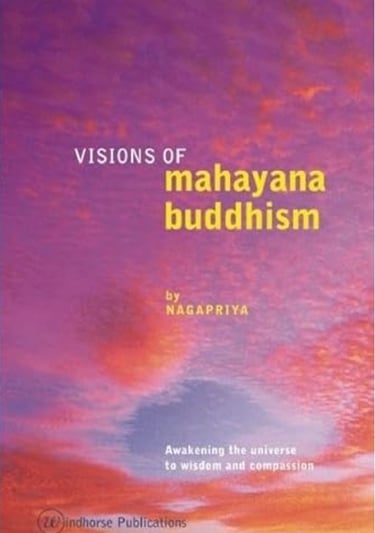

Mahayana Buddhism - Simple Guide (Simple Guides)
We have selected this second book to help our Bujinkan students understand the second major branch of Buddhism, Mahayana. This book provides a rare and insightful overview of Mahayana, which flourished across Asia, particularly in China, Japan, Korea, and Tibet. It introduces the core themes, practices, literature, and movements of this tradition, highlighting its transformative beauty and emphasis on compassion. Before moving to Mahayana, one should first complete Theravada (listed above). Mahayana expands understanding of mind and emptiness, referred to in the Bujinkan as Ku, providing a deeper martial understanding.
by Nagapriva (Author)

4.1


Mahayana Buddhism - Simple Guide (Simple Guides)
We have selected this second book to help our Bujinkan students understand the second major branch of Buddhism, Mahayana. This book provides a rare and insightful overview of Mahayana, which flourished across Asia, particularly in China, Japan, Korea, and Tibet. It introduces the core themes, practices, literature, and movements of this tradition, highlighting its transformative beauty and emphasis on compassion. Before moving to Mahayana, one should first complete Theravada (listed above). Mahayana expands understanding of mind and emptiness, referred to in the Bujinkan as Ku, providing a deeper martial understanding.
by Nagapriva (Author)
4.1
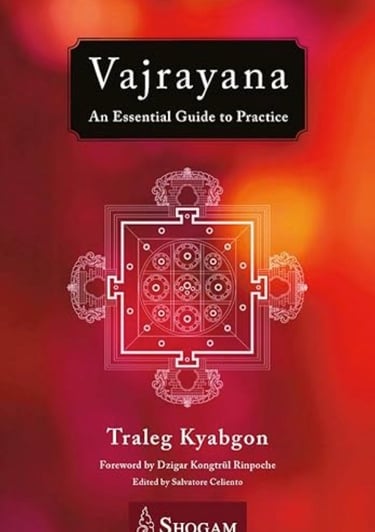

Vajrayana: An Essential Guide to Practice
We have selected this third book to introduce our students to the third major branch of Buddhism, Vajrayana. Written by Traleg Kyabgon Rinpoche and presented by Dzigar Kongtrul, it captures the profound wisdom and compassion of the Vajrayana lineage, making its teachings accessible to modern practitioners. Vajrayana should be studied after Theravada and Mahayana (both listed above), in that order. The book illuminates the tantric practices and principles, it brings a complete understanding of mind, emptiness, and what lies beyond offering a full theoretical foundation of the mind within Bujinkan practice and more.
by Traleg Kyabgon (Author)

4.8


Vajrayana: An Essential Guide to Practice
We have selected this third book to introduce our students to the third major branch of Buddhism, Vajrayana. Written by Traleg Kyabgon Rinpoche and presented by Dzigar Kongtrul, it captures the profound wisdom and compassion of the Vajrayana lineage, making its teachings accessible to modern practitioners. Vajrayana should be studied after Theravada and Mahayana (both listed above), in that order. The book illuminates the tantric practices and principles, it brings a complete understanding of mind, emptiness, and what lies beyond offering a full theoretical foundation of the mind within Bujinkan practice and more.
by Traleg Kyabgon (Author)
4.8
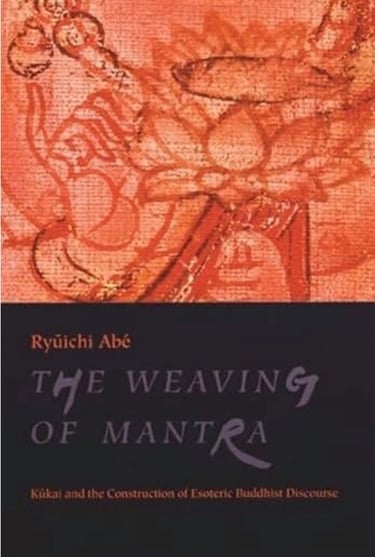

The Weaving of Mantra: Kukai and Esoteric Buddhism
We have selected this book to introduce a form of Buddhism traditionally relevant to Japan, particularly within the Ninjutsu tradition of the Bujinkan. Ryûichi Abé presents an in-depth study of Kûkai (774–835), founder of the Shingon school of esoteric Buddhism, offering a fresh perspective on early Japanese religious history. The book emphasizes Kûkai’s contribution not just as the founder of a sect, but as the creator of a theory of language grounded in ritual mantra, providing valuable insight into the spiritual and cultural foundations influencing Japanese martial traditions.
by Ruche Abe (Author)

4.8


The Weaving of Mantra: Kukai and Esoteric Buddhism
We have selected this book to introduce a form of Buddhism traditionally relevant to Japan, particularly within the Ninjutsu tradition of the Bujinkan. Ryûichi Abé presents an in-depth study of Kûkai (774–835), founder of the Shingon school of esoteric Buddhism, offering a fresh perspective on early Japanese religious history. The book emphasizes Kûkai’s contribution not just as the founder of a sect, but as the creator of a theory of language grounded in ritual mantra, providing valuable insight into the spiritual and cultural foundations influencing Japanese martial traditions.
by Ruche Abe (Author)
4.8
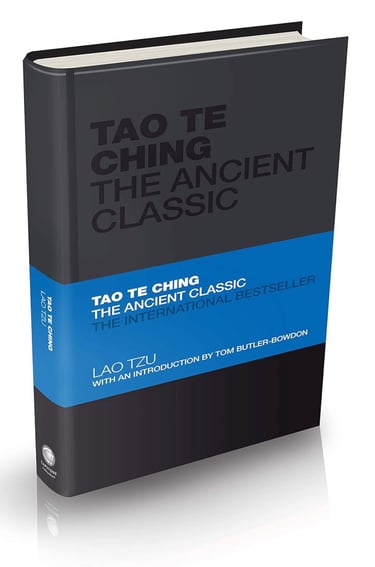

Tao Te Ching: The Ancient Classic (Capstone Classics)
We have selected this book as a classic introduction to the basics of Taoism. This ancient Chinese text has inspired millions with its focus on natural attunement rather than mindless striving, offering timeless guidance on balance, flow, and personal development.
For martial artists, its principles provide insight into movement, strategy, and the cultivation of harmony—both in training and in life—making it a valuable companion to deepen your understanding of the philosophical foundations that enrich Bujinkan practice.
by Lao Tzu (Author), Tom Butler-Bowdon (Introduction)

4.6
Ten | Metaphysics / Taoism


Tao Te Ching: The Ancient Classic (Capstone Classics)
We have selected this book as a classic introduction to the basics of Taoism. This ancient Chinese text has inspired millions with its focus on natural attunement rather than mindless striving, offering timeless guidance on balance, flow, and personal development.
For martial artists, its principles provide insight into movement, strategy, and the cultivation of harmony—both in training and in life—making it a valuable companion to deepen your understanding of the philosophical foundations that enrich Bujinkan practice.
by Lao Tzu (Author), Tom Butler-Bowdon (Introduction)
4.6
Ten | Metaphysics / Taoism
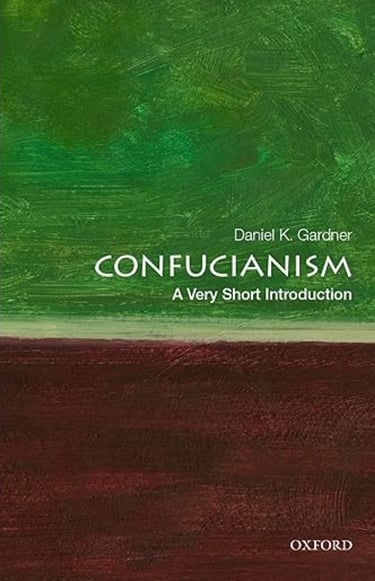

Confucianism: A Very Short Introduction
We have selected this book as a classic introduction to the foundations of Confucianism, a key pillar for understanding Chinese culture and philosophy. Originating in the sixth century BCE, Confucian thought has shaped Chinese society, politics, ethics, and daily life for over two millennia. This concise guide explores its core questions—what makes a good person and what constitutes good government—while tracing its influence from imperial times to the modern era. For Bujinkan students, it offers valuable cultural and ethical context that deepens historical understanding and enriches personal practice.
by Daniel K. Gardner (Author)

4.5
Ten | Philosophy / Confucianism


Confucianism: A Very Short Introduction
We have selected this book as a classic introduction to the foundations of Confucianism, a key pillar for understanding Chinese culture and philosophy. Originating in the sixth century BCE, Confucian thought has shaped Chinese society, politics, ethics, and daily life for over two millennia. This concise guide explores its core questions—what makes a good person and what constitutes good government—while tracing its influence from imperial times to the modern era. For Bujinkan students, it offers valuable cultural and ethical context that deepens historical understanding and enriches personal practice.
by Daniel K. Gardner (Author)
4.5
Ten | Philosophy / Confucianism
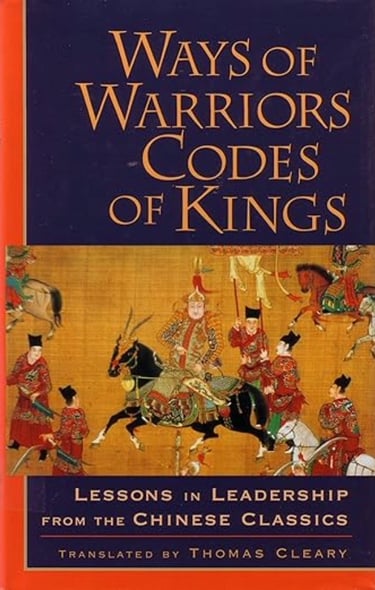

Ways of Warriors, Codes of Kings: Lessons in Leadership from the Chinese Classics
We have selected this book as a reference that gathers many of the key Chinese classics in a single volume. While it may not provide in-depth guidance on strategy, it offers a clear and accessible introduction for beginners, presenting excerpts from six major works—including The Art of War and other lesser-known texts—and giving students a solid foundation to expand their understanding of leadership and strategic principles.
by Thomas Cleary (Translator)
Chi | Conflict

4.2
Chi | Conflict / War Classics


Ways of Warriors, Codes of Kings: Lessons in Leadership from the Chinese Classics
We have selected this book as a reference that gathers many of the key Chinese classics in a single volume. While it may not provide in-depth guidance on strategy, it offers a clear and accessible introduction for beginners, presenting excerpts from six major works—including The Art of War and other lesser-known texts—and giving students a solid foundation to expand their understanding of leadership and strategic principles.
by Thomas Cleary (Translator)
Chi | Conflict
4.2
Chi | Conflict / War Classics
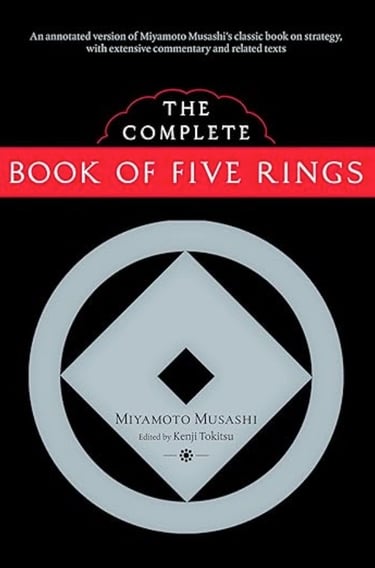

The Complete Book of Five Rings
We have selected this book as one of the fundamental classics of Japanese strategy and martial arts, essential for beginners. The Complete Book of Five Rings presents Musashi’s seminal works, including The Book of Five Rings, The Mirror of the Way of Strategy, and other key writings, all translated and annotated by modern martial arts master Kenji Tokitsu. This collection provides a detailed and nuanced view of Musashi’s approach to swordsmanship, strategy, and self-cultivation, while placing his teachings in historical and philosophical context. Ut offers essential insights into the foundations of Japanese martial strategy.
by Miyamoto Musashi (Author), Kenji Tokitsu (Author)

4.7


The Complete Book of Five Rings
We have selected this book as one of the fundamental classics of Japanese strategy and martial arts, essential for beginners. The Complete Book of Five Rings presents Musashi’s seminal works, including The Book of Five Rings, The Mirror of the Way of Strategy, and other key writings, all translated and annotated by modern martial arts master Kenji Tokitsu. This collection provides a detailed and nuanced view of Musashi’s approach to swordsmanship, strategy, and self-cultivation, while placing his teachings in historical and philosophical context. Ut offers essential insights into the foundations of Japanese martial strategy.
by Miyamoto Musashi (Author), Kenji Tokitsu (Author)
4.7
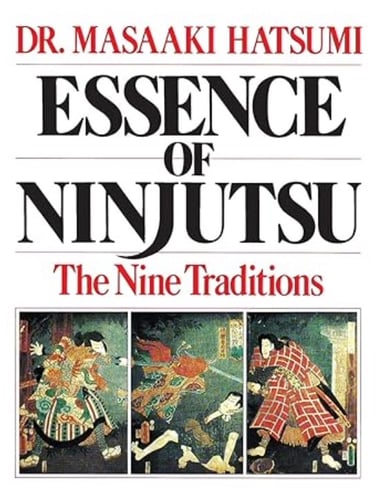

Essence of Ninjutsu: The Nine Traditions
We have selected only a few books from Hatsumi Sensei’s extensive collection to guide students beginning their journey in ninjutsu. Essence of Ninjutsu: The Nine Traditions provides a rich introduction to the art, combining historical accounts, stories of past grandmasters, and dojo teachings with illustrations. Hatsumi Sensei explains the development of the nine ninja traditions, clarifies common myths, and shares practical insights, offering Bujinkan students a deeper understanding of the philosophy, techniques, and enduring spirit that continue to shape the practice today.
by Masaaki Hatsumi (Author)

4.8
Chi | Conflict / Ninjutsu


Essence of Ninjutsu: The Nine Traditions
We have selected only a few books from Hatsumi Sensei’s extensive collection to guide students beginning their journey in ninjutsu. Essence of Ninjutsu: The Nine Traditions provides a rich introduction to the art, combining historical accounts, stories of past grandmasters, and dojo teachings with illustrations. Hatsumi Sensei explains the development of the nine ninja traditions, clarifies common myths, and shares practical insights, offering Bujinkan students a deeper understanding of the philosophy, techniques, and enduring spirit that continue to shape the practice today.
by Masaaki Hatsumi (Author)
4.8
Chi | Conflict / Ninjutsu
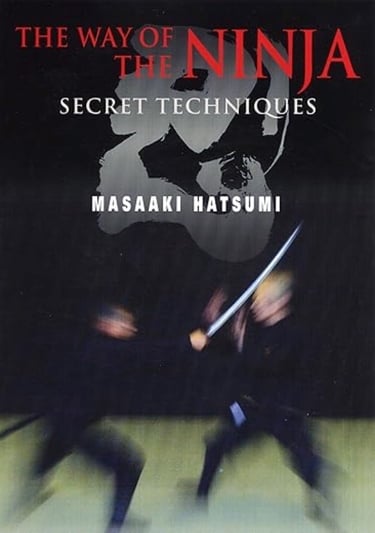

The Way of the Ninja: Secret Techniques
We have selected this book as another key work by Hatsumi Sensei for students exploring ninjutsu. The Way of the Ninja presents the essence, truth, and wisdom of this versatile martial art, using detailed illustrations and perceptive observations.
Hatsumi Sensei highlights two fundamental principles: that ninjutsu forms the backbone of the martial arts, and that it reveals their deeper spiritual significance. For Bujinkan students, this book offers valuable insight into both the practical and philosophical dimensions of their training.
by Masaaki Hatusmi (Translator)

4.6


The Way of the Ninja: Secret Techniques
We have selected this book as another key work by Hatsumi Sensei for students exploring ninjutsu. The Way of the Ninja presents the essence, truth, and wisdom of this versatile martial art, using detailed illustrations and perceptive observations.
Hatsumi Sensei highlights two fundamental principles: that ninjutsu forms the backbone of the martial arts, and that it reveals their deeper spiritual significance. For Bujinkan students, this book offers valuable insight into both the practical and philosophical dimensions of their training.
by Masaaki Hatusmi (Translator)
4.6
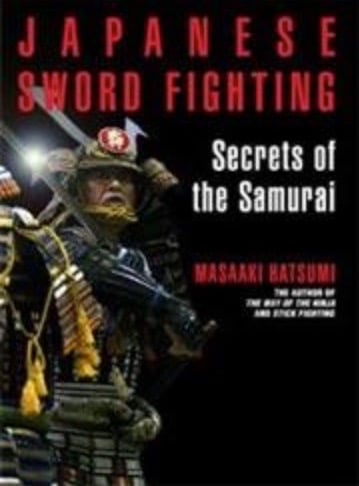

Japanese Sword Fighting: Secrets of the Samurai
We have selected this book as a key reference for students exploring Japanese swordsmanship and classical martial arts. Our Soke, Masaaki Hatsumi, Budo and ninja grandmaster, presents a wide range of techniques, from Ninja kenpo and Yagyu Shinkage-ryu to advanced weapon applications, including secret forms and mutodori (no-sword) techniques. Illustrated with samurai calligraphy, historical scrolls, and detailed drawings, the book provides Bujinkan students with both practical technical guidance and a deeper understanding of the history, philosophy, and cultural foundations that shape Japanese sword fighting.
by Masaaki Hatusmi (Author)

4.6


Japanese Sword Fighting: Secrets of the Samurai
We have selected this book as a key reference for students exploring Japanese swordsmanship and classical martial arts. Our Soke, Masaaki Hatsumi, Budo and ninja grandmaster, presents a wide range of techniques, from Ninja kenpo and Yagyu Shinkage-ryu to advanced weapon applications, including secret forms and mutodori (no-sword) techniques. Illustrated with samurai calligraphy, historical scrolls, and detailed drawings, the book provides Bujinkan students with both practical technical guidance and a deeper understanding of the history, philosophy, and cultural foundations that shape Japanese sword fighting.
by Masaaki Hatusmi (Author)
4.6
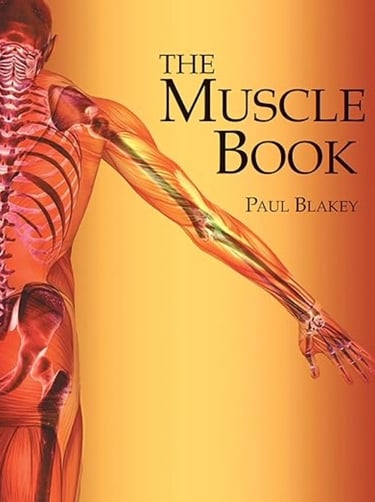

Muscle Book
We have selected this book to give our students a simple and practical introduction to human anatomy, focusing on the basic bones and muscles.
This knowledge is useful for martial artists to better understand how the body moves and functions, and for beginner healers starting their study of the body. The book explains muscles clearly, highlights common problems and weaknesses, and offers basic self-massage techniques, making it an easy and valuable reference for anyone looking to build a solid foundation.
by Paul Blakey (Author)
Jin | Healing

4.6
Jin | Healing / Basic Anatomy


Muscle Book
We have selected this book to give our students a simple and practical introduction to human anatomy, focusing on the basic bones and muscles.
This knowledge is useful for martial artists to better understand how the body moves and functions, and for beginner healers starting their study of the body. The book explains muscles clearly, highlights common problems and weaknesses, and offers basic self-massage techniques, making it an easy and valuable reference for anyone looking to build a solid foundation.
by Paul Blakey (Author)
Jin | Healing
4.6
Jin | Healing / Basic Anatomy
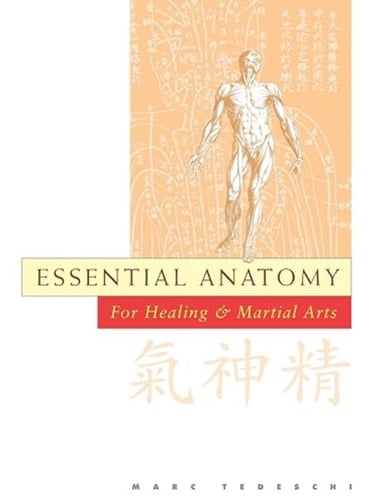

Essential Anatomy: For Healing and Martial Arts
Although traditional Japanese medicine does not use acupuncture in the same way as Chinese medicine described in this book, and our martial art does not follow the martial references it contains, we have selected it because it offers a clear, all-round introduction to anatomy, acupressure, and acupuncture principles. This makes it a valuable starting point for beginners who want to explore an alternative Eastern medical perspective alongside the Western one. The book is well-illustrated and easy to follow, providing a useful foundation for anyone interested in understanding the body through both traditions.
by Marc Tedeschi (Author)

4.6
Jin | Healing / Anatomy & TCM


Essential Anatomy: For Healing and Martial Arts
Although traditional Japanese medicine does not use acupuncture in the same way as Chinese medicine described in this book, and our martial art does not follow the martial references it contains, we have selected it because it offers a clear, all-round introduction to anatomy, acupressure, and acupuncture principles. This makes it a valuable starting point for beginners who want to explore an alternative Eastern medical perspective alongside the Western one. The book is well-illustrated and easy to follow, providing a useful foundation for anyone interested in understanding the body through both traditions.
by Marc Tedeschi (Author)
4.6
Jin | Healing / Anatomy & TCM
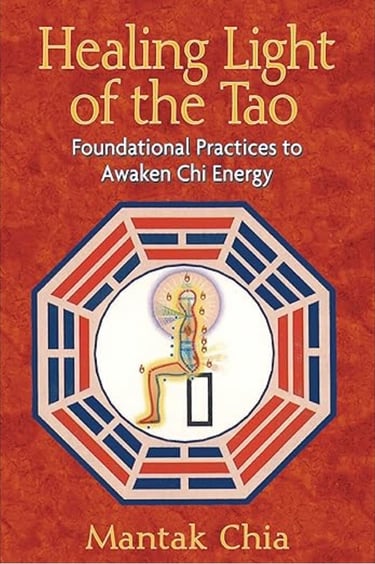

Healing Light of the Tao: Foundational Practices
We have selected this book because, although advanced in parts, it offers a deeply valuable introduction to the profound healing arts of Taoism while remaining accessible to all levels. Mantak Chia’s teaching on the Microcosmic Orbit presents a complete Taoist energy system, balancing masculine and feminine channels to cultivate harmony, vitality, and inner balance. It explains key spiritual theories and chi practices with clarity, making it a strong entry point for anyone interested in exploring Taoist approaches to energy, health, and spiritual development in greater depth.
by Mantak Chia (Author)

4.7
Jin | Healing / Taoist Energy Healing


Healing Light of the Tao: Foundational Practices
We have selected this book because, although advanced in parts, it offers a deeply valuable introduction to the profound healing arts of Taoism while remaining accessible to all levels. Mantak Chia’s teaching on the Microcosmic Orbit presents a complete Taoist energy system, balancing masculine and feminine channels to cultivate harmony, vitality, and inner balance. It explains key spiritual theories and chi practices with clarity, making it a strong entry point for anyone interested in exploring Taoist approaches to energy, health, and spiritual development in greater depth.
by Mantak Chia (Author)
4.7
Jin | Healing / Taoist Energy Healing
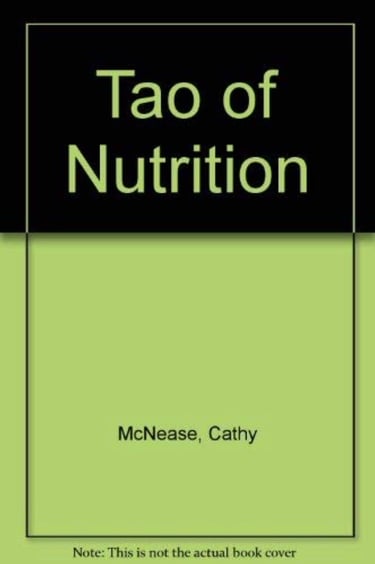

Tao of Nutrition: New and Expanded Edition
We have selected this book as a practical introduction to Taoist nutrition, mainly for those with a foundation in traditional Chinese medicine, though its insights can help anyone interested in health and well-being. It shows how to make meals therapeutic by choosing foods that suit your constitution, address ailments, and follow the seasons. Drawing on ancient Chinese wisdom, it explains how proper nutrition can restore balance, strengthen the body, and support natural healing, offering guidance useful for both beginners and more experienced practitioners.
by Cathy McNease (Author) Maoshin Ni (Author)

4.5
Jin | Healing / Nutrition


Tao of Nutrition: New and Expanded Edition
by Cathy McNease (Author) Maoshin Ni (Author)
4.5
Jin | Healing / Nutrition
We have selected this book as a practical introduction to Taoist nutrition, mainly for those with a foundation in traditional Chinese medicine, though its insights can help anyone interested in health and well-being. It shows how to make meals therapeutic by choosing foods that suit your constitution, address ailments, and follow the seasons. Drawing on ancient Chinese wisdom, it explains how proper nutrition can restore balance, strengthen the body, and support natural healing, offering guidance useful for both beginners and more experienced practitioners.
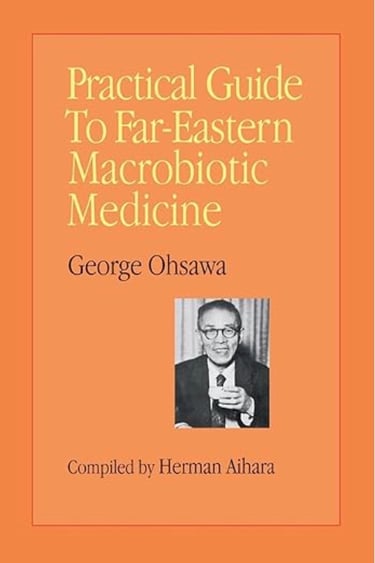

Practical Guide to Far Eastern Macrobiotic Medicine
We have selected this book because it represents one version of nutritional knowledge from the Japanese heritage. While some of its ideas may be considered controversial, it offers a valuable perspective that helps in understanding principles of traditional medicine.
This comprehensive guide presents George Ohsawa’s teachings on health and shows how many ailments can be addressed simply and naturally through food, providing students with insight into a key aspect of Japan’s holistic approach to wellness.
by George Oshawa (Author), Herman Aihara (Author)

5.0


Practical Guide to Far Eastern Macrobiotic Medicine
We have selected this book because it represents one version of nutritional knowledge from the Japanese heritage. While some of its ideas may be considered controversial, it offers a valuable perspective that helps in understanding principles of traditional medicine.
This comprehensive guide presents George Ohsawa’s teachings on health and shows how many ailments can be addressed simply and naturally through food, providing students with insight into a key aspect of Japan’s holistic approach to wellness.
by George Oshawa (Author), Herman Aihara (Author)
5.0
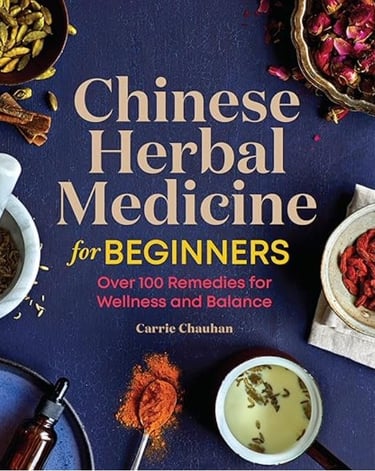

Chinese Herbal Medicine for Beginners
We have selected this book to provide a practical introduction to Oriental nutrition and herbal medicine. Chinese Herbal Medicine for Beginners explains how imbalances affect the body, introduces common herbs and their uses, and teaches simple methods for preparing decoctions, infusions, oils, and other remedies.
With over 100 beginner-friendly formulas, it offers anyone interested in Eastern healing a clear and approachable starting point for exploring the connections between diet, herbal medicine, and overall health and well-being.
by Carrie Chauhan (Author)

4.7
Jin | Healing / Herbalism


Chinese Herbal Medicine for Beginners
We have selected this book to provide a practical introduction to Oriental nutrition and herbal medicine. Chinese Herbal Medicine for Beginners explains how imbalances affect the body, introduces common herbs and their uses, and teaches simple methods for preparing decoctions, infusions, oils, and other remedies.
With over 100 beginner-friendly formulas, it offers anyone interested in Eastern healing a clear and approachable starting point for exploring the connections between diet, herbal medicine, and overall health and well-being.
by Carrie Chauhan (Author)
4.7
Jin | Healing / Herbalism
Join Our Free Training
